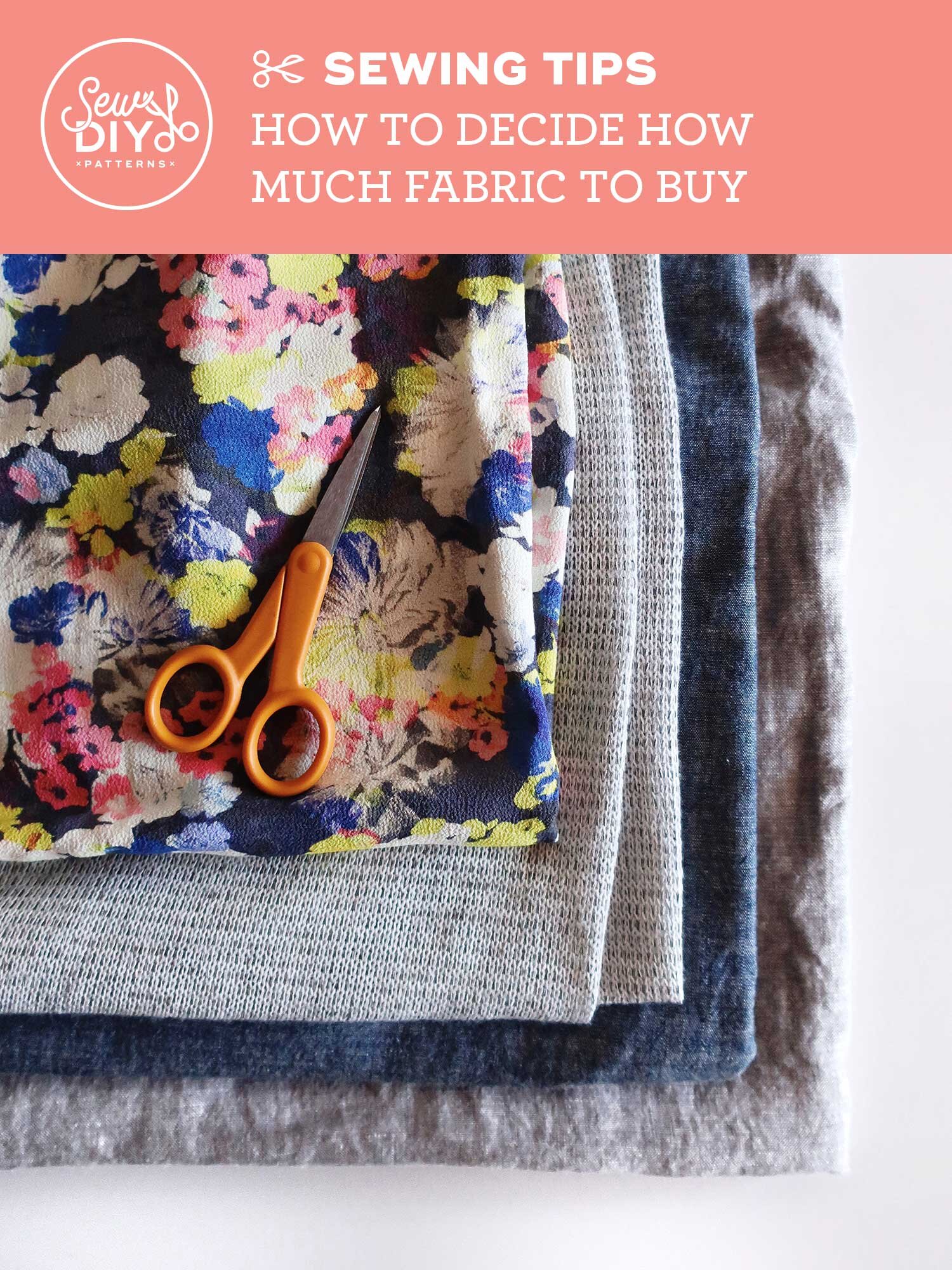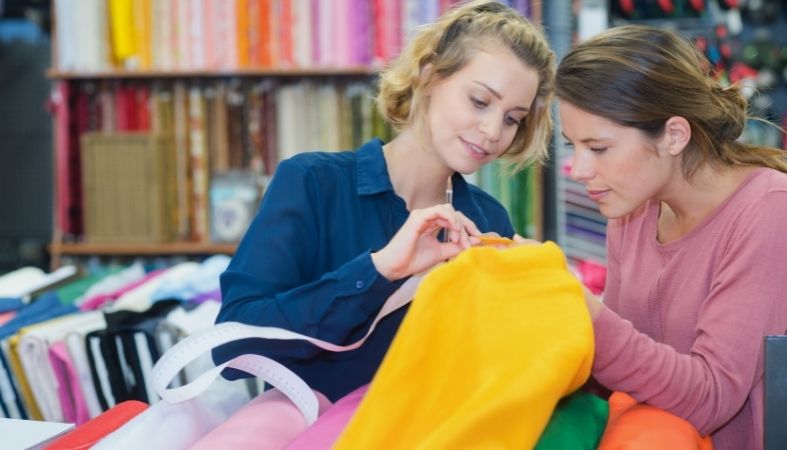Fascination About All 4 Way Stretch Fabrics
Fascination About All 4 Way Stretch Fabrics
Blog Article
The Main Principles Of All 4 Way Stretch Fabrics
Table of ContentsThe 9-Minute Rule for All 4 Way Stretch FabricsThe Ultimate Guide To All 4 Way Stretch FabricsSome Ideas on All 4 Way Stretch Fabrics You Should KnowThe Ultimate Guide To All 4 Way Stretch FabricsThe Greatest Guide To All 4 Way Stretch FabricsEverything about All 4 Way Stretch FabricsAll 4 Way Stretch Fabrics for Beginners
As I additionally want UV security from my garments when I head out, I would pick a largely woven cotton material. Also the undergarments is better in cotton (No spandex bands anywhere near the skin). Examine out the ideal fabrics appropriate for making summer season clothing. One more consideration when getting the textile is the means it will certainly after washing.A safe bet would certainly be to purchase at least 10% extra textile. If you can buy preshrunk textile, this is the ideal.

If you are matching the color, like selecting the cellular lining for the primary textile or picking fabric to add as trim, this is particularly important. The fabric showrooms will usually have a light well where you can see the fabric in sunshine (or a window with excellent light from outdoors).
Some Known Details About All 4 Way Stretch Fabrics

Many textiles have to do with 44 large. When you go to get material, quote exactly how a lot you want initially and after that go to the shop. Look into this article to know the solution to this regularly listened to question "Just how much fabric do I need". With a fat quarter, you will obtain an 18 vast by 22 long.
These are available in the stores I frequent as cut items they are mainly valued reduced and some of them, when they are last off the screw, treasured very low. You will certainly have to ask the salespersons for pieces like that. Some wonderful bargains can be had in this manner. In dressmaking, we purchase material by the yard/meter.
What Does All 4 Way Stretch Fabrics Mean?
In a quarter of a backyard, you get a 9 by 44 strip of fabric, which is about 22 cm in size. It is constantly better to purchase larger towel. According to the width of fabrics, they may be called single-width and double-width. Single width is normally up to 49 inches in width and dual size approximately 60.
Pick textiles that are not also tough or inflexible, or you wouldn't be comfortable in them. Bed linen, Jeans, flannel, For chillier climates, pick woollen (100% as well as wool blends) woollen tweeds, wool crepe; it basically depends on what trousers you are talking regarding Tailored pants, Unstructured Pant, Combined, Jeans.
All cotton materials are good for children. Knit materials are additionally terrific for kids you can go for woollen knits.
The Best Strategy To Use For All 4 Way Stretch Fabrics
Look into this article on the finest textile for clothing for children and kids for even more information on this subject. Light-weight cotton is my favorite to stitch skirts. Cotton yard towel in pretty prints is excellent. Silk jersey is an excellent textile for stitching skirts, as is Ponte Roma knit fabric.
Additionally, drapey rayons, soft woollen, lycra blends, and stretch velours are all suitable for sewing skirts. Woollen (Woollen crepe has a terrific drape and provides enough structure for jackets; wool tweeds are excellent also), Bed linen & Flannel. Velvet (Take A Look At the slouchy velvet sports jacket tutorial, incidentally). Lightweight knits are great for free-flowing jackets similar to this waterfall jacket pattern Raw silk, satin, taffeta, velvet, Lace, silk chiffon, and Organza are all excellent for making gowns.
You can acquire medium-weight fabrics with some spandex/elastane added for a fitting bodycon-type outfit. For drapey outfits, you can pick light-weight materials. Jersey has a drapey fit similar to this. Crepe, challis, and charmeuse are all drapey fabrics matched for this design. Have a look at these messages: Best textile for making laid-back gowns and tops; Names of various gowns. Rayon, Acetate, and cotton lining materials are widely made use of.
Light-weight cotton fabric, Cambric, Chintz, Twill, Faille, Seersucker, Poplin, light-weight woven broadcloth, batiste, linen, eyelet are great for making tee shirts and shirts. I like chiffon shirts. Silky satin fabric benefits making airy tops. Inspect out the message on the 7 ideal materials for making shirts. Making serapes and headscarfs need different considerations for the fabric check out this message on the textiles for making scarves When getting patterned material (a lot of the patterned material comes with a size of 45 or 54 inches), there will be pattern repeat in these fabrics, and this must be thought about when reducing fabric in addition to acquiring them i.e., if you want to match the patterns at the joints.
The Only Guide for All 4 Way Stretch Fabrics
This post has the names of all the checkered patterns and this, stripe patterns. The concepts will certainly be distributed in an organized style on the fabric. But you might see occasionally If the print is not positioned on the fabric correctly, it can not be matched or aligned when built without distorting the fabric and the hang of the garment.


You can discover more about grain and grainline of material here. The material weight depends on numerous factors like the weave, fiber kind, and so on and is usually represented by GSM. GSM can vary from 60 -700; 700 being the GSM of extremely high-grade woolen material. A denim textile my website has a GSM of 400, depending on the weave.
One thing you have to keep in mind is that greater fabric weight does not denote higher fabric quality. You can not choose high fabric weight material denim for a lightweight floating shawl.
In a nutshell, the most essential standards to look for in the material you acquire are as adheres to (https://www.nulled.to/user/6223916-a4wsfabrics). The number of threads per inch of textile (yarns-per-inch).
4 Easy Facts About All 4 Way Stretch Fabrics Described
In high-grade fabric, this balance (either in numbers or in size) will certainly constantly be kept. Processes used on fabric to improve look and efficiency.
A two-ply thread is exceptional to a single-ply yarn.
If you are preparing to begin a brand-new embroidery task, picking a material will be the most important step once you decide what you intend to make. After you've mosted likely to all the problem and expenditure of buying the stitching maker you like, a pattern you love, and a textile you enjoy, you desire the completed product to be a success, right? One means to achieve that is to begin by making sure your fabric is truly ideal for the job.
The Main Principles Of All 4 Way Stretch Fabrics
As an example, if you're making a patchwork, you'll automatically intend to utilize quilter's weight cotton for ideal results. What if you desire to make an item of clothing? Exactly how do you recognize which fabric will give you the finest result? Selecting a fabric just due to the fact that you enjoy the print or style on it isn't always the finest approach.
You get the picture. In order to prevent doing a whole task for practically nothing, we've compiled some ideas to assist you decide which material is best for your task. Allow's state you currently have a project in mind; just how do you discover the best fabric for it? One method is to take a look at similar products in storesor ones you currently have.
Then, think about the attributes you desire the ended up item to have. If clothes, will it be fitted or loosened? Dressy or daily? For cozy climate or cold? Do you desire a strong color or a print? If you are making a non-wearable thing such as a cushion cover or potholder, use a durable textile such as canvas.
There is so much information out there about textiles, their characteristics, and their uses, it can reach be frustrating! So don't try to take it in all simultaneously; just start with the job handy. Discover all you can regarding the textile you utilize for this set project.
Report this page